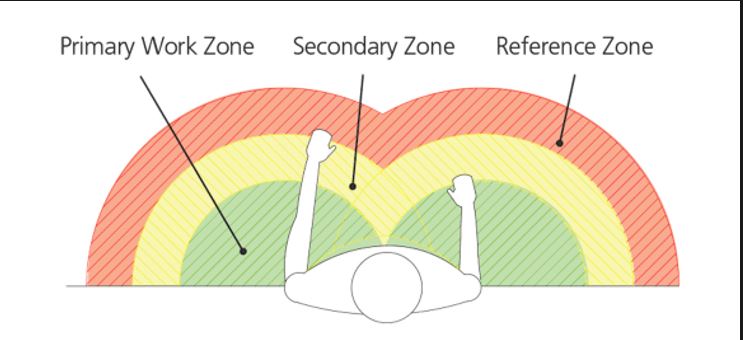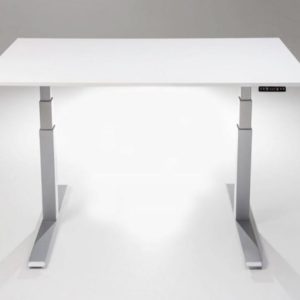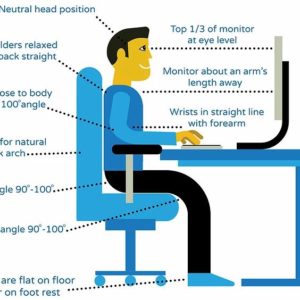Updated: Jan 29, 2021
Power Zone Ergonomics: How to Apply to Your Posture at Work
How to Apply the “Power Zone” to Your Posture at Work
Do you remember when Ricky Bobby was being interviewed in the movie Talladega Nights? As Ricky answers the reporter’s questions, he hilariously blurts out, “I don’t know what to do with my hands.” It’s a funny and memorable line and a conundrum we can all probably relate to. However, this dilemma is no laughing matter when you’re talking about hand placement in relation to your work. To achieve optimal and pain-free performance on the job, you must learn how to apply the “power zone” to your posture at work.
What Does Power Zone Mean?
The term “power zone” is used with various meaning in different situations and work industries, but when the term is used in ergonomics, it refers to the position of your arms while performing a task. While working, it is important to keep your back upright and straight and to keep your arms by your sides, with your elbows bent no more than 90 degrees. This is your “power zone.”
Why You Should Apply the Power Zone at Work
Ideally, you should complete most of your work throughout the day in the “power zone.” This position allows for your natural physiology and anatomy to support you while completing tasks. When your body is in a position outside of your “power zone” for long periods of time, the smaller muscles in your body are forced to work harder than they are designed to and provide less support than what is needed.
Many times injuries occur when weaker muscles are engaged to perform strenuous tasks or heavy lifting, when those muscles simply were not designed to do those sorts of tasks. For example, if you are lifting an item with your arms extending forward instead of using the “power zone,” which keeps the item close to your body, strain and stress is being placed on the secondary muscles of your back, neck, and shoulders, which may result in pain and discomfort immediately or over time.
The “power zone” ensures that you are using the right muscles for the right tasks. It engages the larger and stronger muscles at the core of your body to perform the more strenuous activities. You should apply the “power zone” at work to prevent injuries and to maintain optimal performance.

Examples of How the Power Zone Can Be Applied
The “power zone” can be applied to any area of repeated work, so here are a few examples of how the “power zone” can be applied throughout your day.
You might spend a good portion of your workday at a desk, typing on a keyboard. To apply the “power zone” to this situation, keep your keyboard close to your body, at the edge of your desk, to keep your elbows bent at 90 degrees and by your sides. Extending your arms too far out to type on your keyboard all day will almost certainly cause back, neck, and shoulder strain over time.
If you are preparing food, apply the “power zone” by chopping, slicing, or stirring with the food close to you so that, again, your elbows can remain by your sides. If you find yourself lifting a box at work, apply the same rules. Keep your arms close to your sides and your elbows bent at a 90 degree angle. Whatever task you may be performing at work, limit the amount of an extended, repeated reach to no more than 12 inches from your side.
Think about the jobs you perform every day and consider how you can apply the “power zone” to your posture at work. Being mindful of your positioning in any situation is the first step to preventing an injury.
Guiding you today for a healthy tomorrow,
Crystal
Jan 26, 2021
Jan 26, 2021



